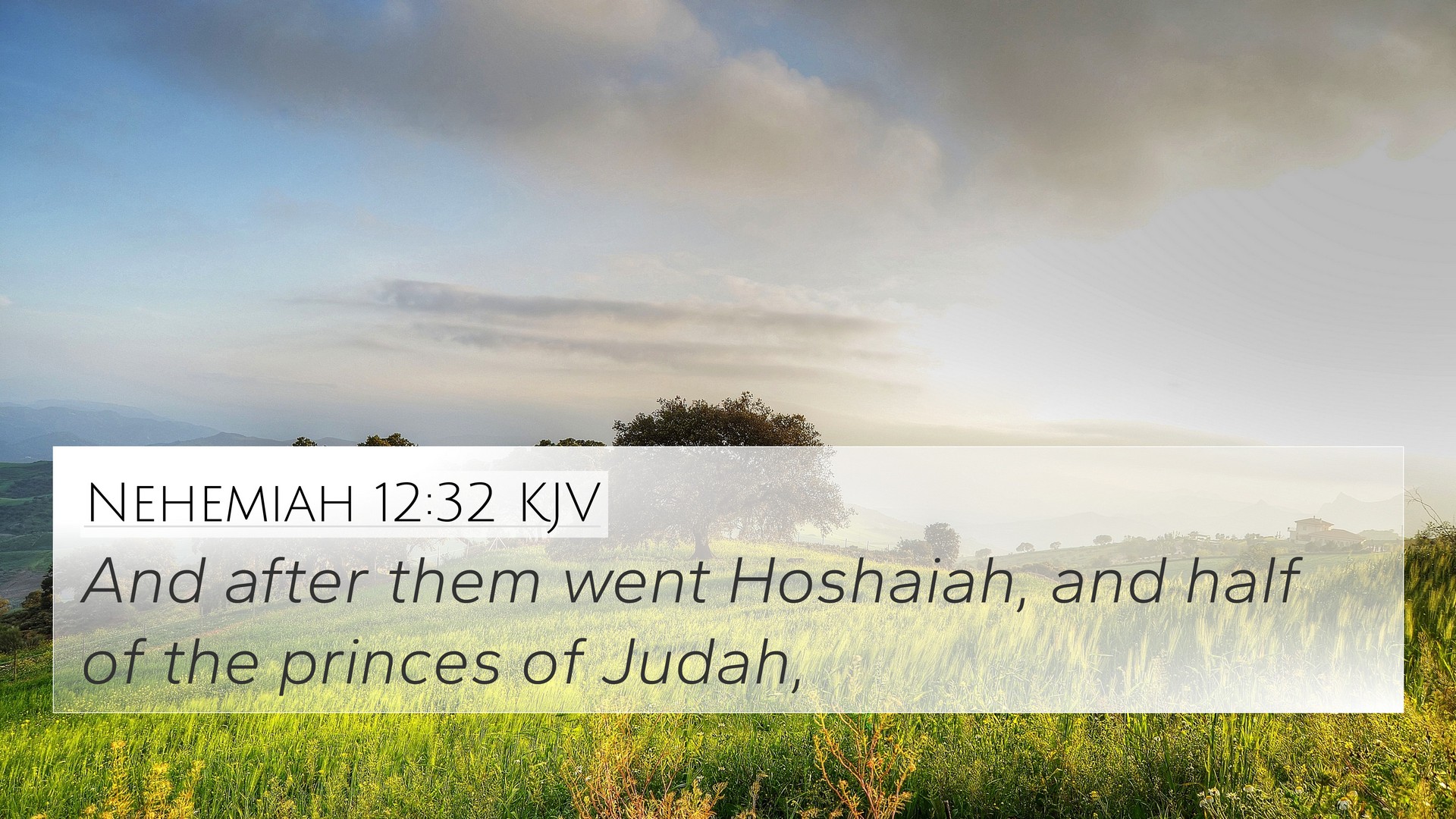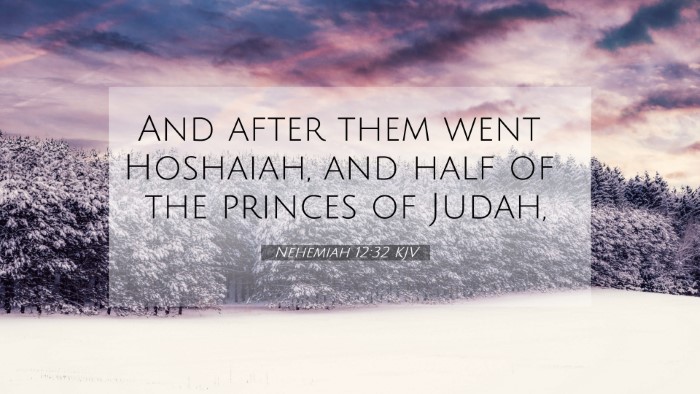Understanding Nehemiah 12:32
Nehemiah 12:32 states: "And the men of the choir, the singers, were to be gathered together, they who came from the district of the East, from the village of the singers, and from the district of the East." This verse describes the arrangement of singers in the newly restored Jerusalem, emphasizing their role in the worship of God during the dedicatory service of the wall.
Summary of Insights
The meaning of Nehemiah 12:32 reflects the importance of praise and worship in the post-exilic community. It highlights the organized effort to restore proper worship practices that had been lost during the Babylonian exile. By focusing on the singers and their designated roles, this passage illustrates the communal nature of worship and the significance of the participants in the temple services.
Commentary Insights
-
Matthew Henry:
Henry remarks on the dedication of the wall and the role of choirs in this community gathering. He emphasizes the cultural significance of music in worship and how it brings the congregation together to celebrate God's deliverance and faithfulness.
-
Albert Barnes:
Barnes notes the geographical origins of the singers, indicating a diverse assembly of worshipers. He highlights the intentionality behind gathering these individuals, as it represented a restoration of worship in a unified manner that honored God's covenant with His people.
-
Adam Clarke:
Clarke elucidates the historical context of this verse, linking it to the broader themes of renewal and dedication found in the book of Nehemiah. He points out the significance of music in expressing communal joy and reverence during significant events.
Cross-References
The following Bible verses illustrate thematic connections and serve as cross-references relevant to Nehemiah 12:32:
- 1 Chronicles 9:33: This verse mentions the singers as important figures in the worship settings of the temple, showing a longstanding tradition of musical worship.
- Psalm 147:1: Expresses the joy and goodness of singing praises to God, reinforcing the significance of music in worship.
- Ezra 2:65: Chronicles the return of singers and musicians to Jerusalem after the exile, indicating their crucial role in the restoration of worship.
- Psalm 30:4: Calls upon the singers to praise the Lord, highlighting the role of music in expressing gratitude.
- Nehemiah 12:27: Preceding verse that also underscores the unity of worship during the dedication of the wall.
- Revelation 5:9: Presents a scene of worship in heaven, where singing is a central activity, indicating its eternal significance.
- Hebrews 2:12: Cites the act of praising God in the assembly, affirming the continuity of worship practices.
Thematic Connections
The thematic connection found in Nehemiah 12:32 ties back to the core principles of community, worship, and restoration. These themes resonate through various books of the Bible, emphasizing the importance of gathering as God's people to bring Him honor:
-
Community Worship: Connecting with verses like Acts 2:42-47, where the early church devoted themselves to teachings, breaking bread, and praising together.
-
Restoration of Worship: Similar to Isaiah 40:1-2, which speaks of comfort and preparing a way for the Lord, paralleling the restoration theme in Nehemiah after exile.
-
Musical Praise: Tied to Colossians 3:16, where singing psalms and spiritual songs is encouraged as part of worship and fellowship in the church.
Cross-Referencing Biblical Texts
Cross-referencing various biblical texts not only enhances understanding but also provides insights into the shared themes and intentions of Scripture. Nehemiah 12:32 can be further explored through:
- Tools for Bible Cross-Referencing: Using Bible concordances for finding related verses.
- Cross-Reference Bible Study: Engaging in comparative Bible verse analysis to draw parallels between the Old and New Testament.
- Inter-Biblical Dialogue: Identifying connections between Old Testament sacrificial worship and New Testament teachings on priesthood and sacrifice.
Conclusion
Nehemiah 12:32 encapsulates the essence of communal worship and the restoration of religious practices post-exile. The insights drawn from various public domain commentaries along with comprehensive cross-references enrich our understanding and interpretation of this verse. The emphasis on music, community, and dedicated worship serves as a profound reminder of the continuity of faith across generations, allowing us to connect themes and teachings throughout the Bible.


